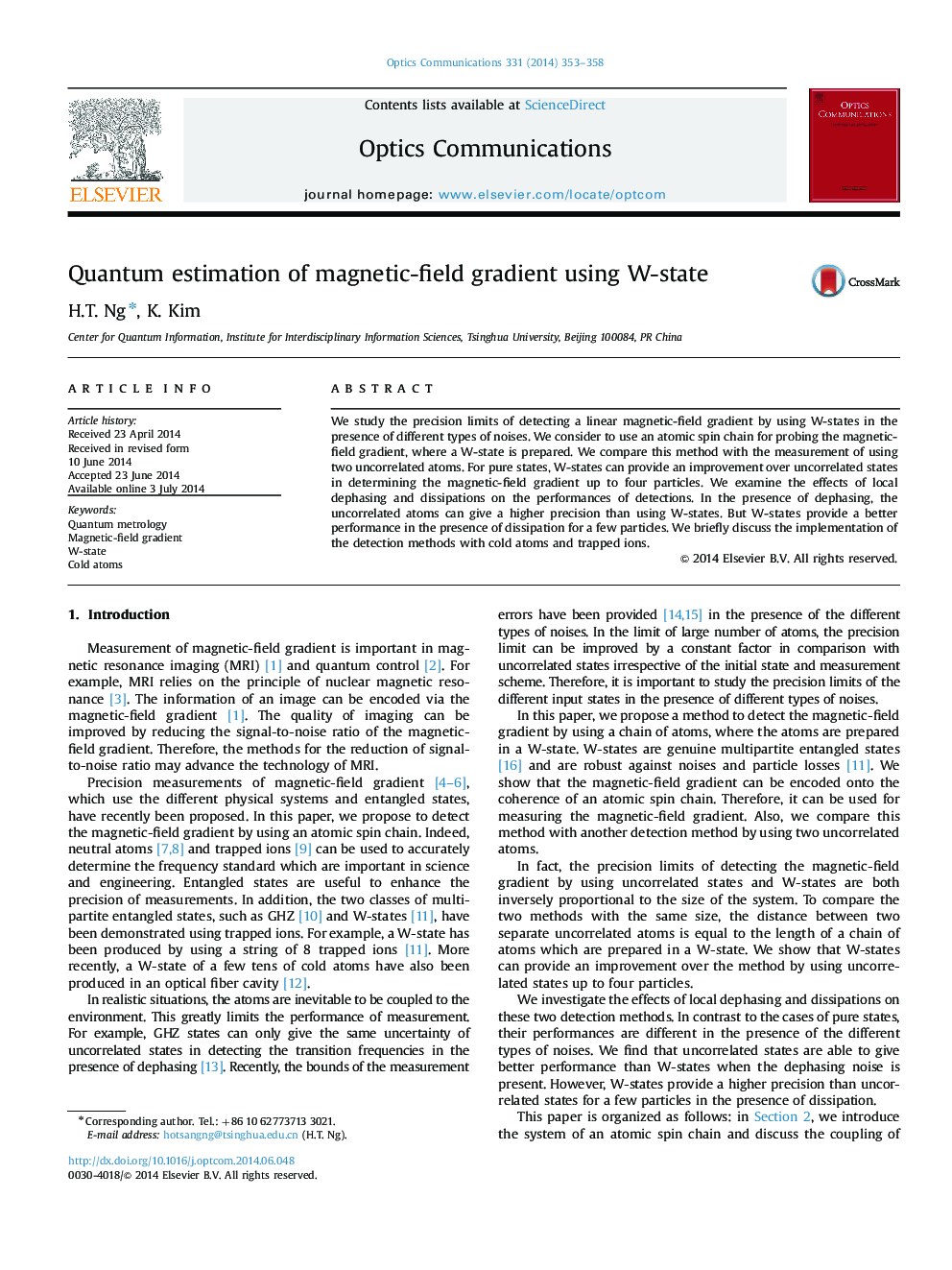| Article ID | Journal | Published Year | Pages | File Type |
|---|---|---|---|---|
| 1534456 | Optics Communications | 2014 | 6 Pages |
We study the precision limits of detecting a linear magnetic-field gradient by using W-states in the presence of different types of noises. We consider to use an atomic spin chain for probing the magnetic-field gradient, where a W-state is prepared. We compare this method with the measurement of using two uncorrelated atoms. For pure states, W-states can provide an improvement over uncorrelated states in determining the magnetic-field gradient up to four particles. We examine the effects of local dephasing and dissipations on the performances of detections. In the presence of dephasing, the uncorrelated atoms can give a higher precision than using W-states. But W-states provide a better performance in the presence of dissipation for a few particles. We briefly discuss the implementation of the detection methods with cold atoms and trapped ions.
